Test Bank for Essentials of Pharmacology for Health Occupations, 6th Edition : Woodrow
$38.00
Name: Essentials of Pharmacology for Health Occupations
Author: Woodrow
Edition: 6th
ISBN-10: 1435480333
ISBN-13: 978-1435480339
- Description
- Reviews (0)
Description
You will receive this product immediate after placing the order
Essentials of Pharmacology for Health Occupations
Essentials of Pharmacology for Health Occupations Woodrow
Essentials of Pharmacology for Health Occupations Woodrow 6th
Essentials of Pharmacology for Health Occupations Woodrow 6th Test Bank
Test Bank for Essentials of Pharmacology for Health Occupations, 6th Edition : Woodrow Download
***THIS IS NOT THE ACTUAL BOOK. YOU ARE BUYING the Test Bank in e-version of the following book***
Name: Essentials of Pharmacology for Health Occupations
Author: Woodrow
Edition: 6th
ISBN-10: 1435480333
ISBN-13: 978-1435480339
Type: Test Bank
– The test bank is what most professors use an a reference when making exams for their students, which means there’s a very high chance that you will see a very similar, if not exact the exact, question in the test!
– The file is either in pdf, doc, rtf or zipped in the package and can easily be read on PCs and Macs.
– Delivery is INSTANT. You can download the files IMMEDIATELY once payment is done.
We also faced similar difficulities when we were students, and we understand how you feel.
But now, with the Essentials of Pharmacology for Health Occupations 6th Test Bank, you will be able to
* Anticipate the type of the questions that will appear in your exam.
* Reduces the hassle and stress of your student life.
* Improve your studying and also get a better grade!
* Get prepared for examination questions.
* Can save you time and help you understand the material.
This is the quality of service we are providing and we hope to be your helper.
Delivery is in the next moment. Test Bank is accurate.
Prepare to receive your Essentials of Pharmacology for Health Occupations 6th Test Bank in the next moment.
ISBN-10: 1435480333
ISBN-13: 978-1435480339
If you have any questions, or would like a receive a sample chapter before your purchase, please contact us at inquiry@testbanksafe.com
Essentials of Pharmacology for Health Occupations
Essentials of Pharmacology for Health Occupations Woodrow
Essentials of Pharmacology for Health Occupations Woodrow 6th
Essentials of Pharmacology for Health Occupations Woodrow 6th Test Bank
Test Bank for Essentials of Pharmacology for Health Occupations, 6th Edition : Woodrow Download
CHAPTER 3: SOURCES AND BODILY EFFECTS OF DRUGS
MATCHING
Match each source with the corresponding medication below.
a. Plants d. Synthetic
b. Minerals e. Recombinant DNA
c. Animals
1. Auranofin
2. Lomotil
3. Codeine
4. Milk of Magnesia
5. Synthroid
6. Demerol
7. Hepatitis B vaccine
8. Digitalis
9. Bactrim
10. Morphine
11. Insulin, regular
12. Human growth hormone
13. Aspirin
14. Quinidine
15. Zinc Oxide ointment
16. Pepsin
17. Monoclonal antibody therapies
1. ANS: B PTS: 1
2. ANS: D PTS: 1
3. ANS: A PTS: 1
4. ANS: B PTS: 1
5. ANS: D PTS: 1
6. ANS: D PTS: 1
7. ANS: E PTS: 1
8. ANS: A PTS: 1
9. ANS: D PTS: 1
10. ANS: A PTS: 1
11. ANS: E PTS: 1
12. ANS: E PTS: 1
13. ANS: A PTS: 1
14. ANS: A PTS: 1
15. ANS: B PTS: 1
16. ANS: C PTS: 1
17. ANS: E PTS: 1
Match each item with the correct description below.
a. Drug Action c. Systemic Effects
b. Drug Effect d. Local Effects
18. Limited to one area of the body
19. Cellular changes
20. Absorbed and distributed throughout the body
21. Physiological changes
18. ANS: D PTS: 1
19. ANS: A PTS: 1
20. ANS: C PTS: 1
21. ANS: B PTS: 1
Match each item with the correct description below.
a. Lethal dose c. Maintenance dose
b. Toxic dose d. Loading dose
22. Amount that will produce harmful side effects or symptoms of poisoning
23. Amount used to quickly elevate the blood level of a drug
24. Amount required to maintain the desired effect
25. Amount that causes death
22. ANS: B PTS: 1
23. ANS: D PTS: 1
24. ANS: C PTS: 1
25. ANS: A PTS: 1
Match each item with the correct description below.
a. Excretion c. Distribution
b. Metabolism d. Absorption
26. Movement from blood into tissues and fluids
27. Alterations the drug undergoes in the body
28. Movement into the bloodstream
29. Elimination of the drug from the body
26. ANS: C PTS: 1
27. ANS: B PTS: 1
28. ANS: D PTS: 1
29. ANS: A PTS: 1
Match each item with the correct statement below.
a. Antagonism d. Placebo
b. Potentiation e. Toxicity
c. Synergism
30. Inactive substance that resembles a medication, although no drug is present
31. Condition that results from exposure to either a poison or a dangerous amount of a drug that is normally safe when given in a smaller amount
32. Opposing action of two drugs in which one decreases or cancels out the effect of the other
33. Action of two drugs in which one prolongs or multiplies the effect of the other
34. Action of two drugs working together in which one helps the other simultaneously for an effect that neither could produce alone
30. ANS: D PTS: 1
31. ANS: E PTS: 1
32. ANS: A PTS: 1
33. ANS: B PTS: 1
34. ANS: C PTS: 1
Match each item with the correct statement below.
a. Paradoxical effect e. Tolerance
b. Anaphylactic reaction f. Idiosyncrasy
c. Hypersensitivity g. Teratogenic effect
d. Dependence
35. Decreased response to a drug
36. Unique, unusual, and unexpected response to a drug
37. Immune response to a drug
38. Effects from maternal drug administration that cause physical defects in a fetus
39. Opposite effect from that which is expected
40. Severe, possibly fatal, allergic response
41. Acquired need for a drug that may produce symptoms when the drug is discontinued
35. ANS: E PTS: 1
36. ANS: F PTS: 1
37. ANS: C PTS: 1
38. ANS: G PTS: 1
39. ANS: A PTS: 1
40. ANS: B PTS: 1
41. ANS: D PTS: 1
Match the pregnancy categories correctly.
a. Pregnancy Category A d. Pregnancy Category D
b. Pregnancy Category B e. Pregnancy Category X
c. Pregnancy Category C f. Pregnancy Category NR
42. Drug studies have revealed an adverse risk to fetus, and the benefit-to-risk ratio must be established before use during pregnancy.
43. Drug studies have shown teratogenic effects and the drug is contraindicated.
44. Conclusive drug studies have not yet been performed in pregnant women or animals.
45. Drug studies on pregnant women have not demonstrated a risk to the fetus.
46. Drug studies not performed on pregnant women; animal studies have not shown fetal risk.
47. Drug has not yet been rated by the FDA.
42. ANS: D PTS: 1
43. ANS: E PTS: 1
44. ANS: C PTS: 1
45. ANS: A PTS: 1
46. ANS: B PTS: 1
47. ANS: F PTS: 1
MULTIPLE CHOICE
1. The most actively pursued source of new drugs today is:
a. plants.
b. minerals.
c. animal sources.
d. synthetic.
ANS: D
Plants, minerals, and animal sources are still vital to the production of existing drugs. Synthesizing new drugs is now more actively pursued than other types of development.
PTS: 1
2. When introduced into the body, all drugs cause cellular changes known as:
a. drug actions.
b. drug effect.
c. systemic effect.
d. absorption.
ANS: A
Feedback
A Correct!
B This refers to physiological change.
C Systemic effect is caused by absorption and distribution throughout the body.
D Absorption results from medication being released across a membrane into the bloodstream.
PTS: 1
3. The physiological changes caused by drugs are known as:
a. drug effects.
b. drug actions.
c. systemic effect.
d. absorption.
ANS: A
Feedback
A Correct!
B Cellular changes caused by drugs
C Distribution throughout the body
D Absorption results from medication being released across a membrane into the bloodstream.
PTS: 1
4. When medication reaches widespread areas of the body it is called:
a. drug affect. c. systemic effect.
b. drug action. d. local effect.
ANS: C
Feedback
A The drug effect is known as physiological change.
B Drug actions are the cellular changes caused by the drugs.
C Correct!
D Local effect is limited to the area of the body where the medication is administered
PTS: 1
5. When medication effect is limited to the area of the body where it is administered, it is called:
a. drug effect. c. systemic effect.
b. drug action. d. local effect.
ANS: D
Feedback
A The drug effect is known as physiological change.
B Drug actions are the cellular changes caused by the drugs.
C Systemic effect is caused by absorption and distribution throughout the body.
D Correct!
PTS: 1
6. The initial high dose used to quickly elevate the level of the drug in the blood is called:
a. maximum dose. c. therapeutic dose.
b. loading dose. d. lethal dose.
ANS: B
Feedback
A Maximum dose is the largest amount of a drug that will produce a desired effect without producing symptoms of toxicity.
B Correct!
C Therapeutic dose is the dose customarily given to achieve the desired effect.
D Lethal dose is a dose that causes death.
PTS: 1
7. The dose required to keep the drug blood level at a steady state in order to maintain the desired effect is called:
a. minimum dose. c. therapeutic dose.
b. maintenance dose. d. maximum dose.
ANS: B
Feedback
A Smallest amount of a drug that will produce a therapeutic effect.
B Correct!
C Customary dose used to achieve a desired effect.
D Largest amount of a drug that will produce a desired effect without producing symptoms of toxicity.
PTS: 1
8. Amount of a drug that will produce harmful side effects or symptoms of poisoning is called:
a. maximum dose. c. lethal dose.
b. toxic dose. d. loading dose.
ANS: B
Feedback
A Largest amount of a drug that will produce a desired effect without producing symptoms of toxicity.
B Correct!
C Amount of a drug that causes death.
D Initial high dose used to quickly elevate the level of the drug in the blood.
PTS: 1
9. A dose that causes death is called:
a. maximum dose. c. lethal dose.
b. toxic dose. d. loading dose.
ANS: C
Feedback
A Maximum dose is the largest amount of a drug that will produce a desired effect without producing symptoms of toxicity.
B Toxic dose is the amount of a drug that will produce harmful side effects or symptoms of poisoning.
C Correct!
D Loading dose is the initial high dose used to quickly elevate the level of the drug in the blood.
PTS: 1
10. Absorption of a drug occurs in the:
a. mucosa of the stomach, mouth, and small intestine.
b. circulatory system.
c. liver.
d. kidney, sweat glands, lungs or intestines.
ANS: A
Feedback
A Correct!
B Distribution occurs in the circulatory system.
C Metabolism occurs in the liver.
D Excretion occurs in the kidneys, sweat glands, lungs, or intestines.
PTS: 1
11. Distribution of a drug occurs in the:
a. mucosa of the stomach, mouth, and small intestine.
b. circulatory system.
c. liver.
d. kidney, sweat glands, lungs, or intestines.
ANS: B
Feedback
A Absorption occurs in the mucosa of the stomach, mouth, and small intestine.
B Correct!
C Metabolism occurs in the liver.
D Excretion occurs in the kidneys, sweat glands, lungs, or intestines.
PTS: 1
12. Metabolism of a drug occurs in the:
a. mucosa of the stomach, mouth, and small intestine.
b. circulatory system.
c. liver.
d. kidney, sweat glands, lungs, or intestines.
ANS: C
Feedback
A Absorption occurs in the mucosa of the stomach, mouth, and small intestine.
B Distribution occurs in the circulatory system.
C Correct!
D Excretion occurs in the kidneys, sweat glands, lungs, or intestines.
PTS: 1
13. Excretion of a drug occurs in the:
a. mucosa of the stomach, mouth. and small intestine.
b. circulatory system.
c. liver.
d. kidney, sweat glands, lungs, or intestines.
ANS: D
Feedback
A Absorption occurs in the mucosa of the stomach, mouth, and small intestine.
B Distribution occurs in the circulatory system.
C Metabolism occurs in the liver.
D Correct!
PTS: 1
14. A condition(s) that may slow absorption of a drug is(are):
a. full or empty stomach. c. liver damage.
b. poor circulation. d. renal or kidney damage.
ANS: A
Feedback
A Correct!
B Poor circulation impairs distribution.
C Liver damage impairs metabolism.
D Renal or kidney damage impairs excretion.
PTS: 1
15. A condition(s) that may slow distribution of a drug is(are):
a. full or empty stomach. c. liver damage.
b. poor circulation. d. renal or kidney damage.
ANS: B
Feedback
A A full or empty stomach may impair absorption of a drug.
B Correct!
C Liver damage impairs metabolism.
D Renal or kidney damage impairs excretion.
PTS: 1
16. A condition(s) that may slow metabolism of a drug is(are):
a. full or empty stomach. c. liver damage.
b. poor circulation. d. renal or kidney damage.
ANS: C
Feedback
A A full or empty stomach may impair absorption of a drug.
B Poor circulation impairs distribution.
C Correct!
D Renal or kidney damage impairs excretion.
PTS: 1
17. A condition(s) that may slow excretion of a drug is(are):
a. full or empty stomach. c. liver damage.
b. poor circulation. d. renal or kidney damage.
ANS: D
Feedback
A A full or empty stomach may impair absorption of a drug.
B Poor circulation impairs distribution.
C Liver damage impairs metabolism.
D Correct!
PTS: 1
18. An affinity or attraction of a drug to a specific organ or cell is called:
a. selective distribution. c. placebo.
b. toxicity. d. synergism.
ANS: A
Feedback
A Correct!
B Toxicity is a condition that results from exposure to either a poison or a dangerous amount of a drug.
C Placebo is an inactive substance that resembles a medication although no drug is present.
D Synergism is the action of two drugs working together in which one helps the other produce an effect that neither could produce alone.
PTS: 1
19. The action of two drugs working together in which one helps the other produce an effect that neither could produce alone is called:
a. selective distribution. c. placebo.
b. toxicity. d. synergism.
ANS: D
Feedback
A Selective distribution is an affinity of a drug to a specific organ or cells.
B Toxicity is a condition that results from exposure to either a poison or a dangerous amount of a drug.
C Placebo is an inactive substance that resembles a medication although no drug is present.
D Correct!
PTS: 1
20. The opposing action of two drugs in which one decreases or cancels out the effect of the other is called:
a. placebo. c. potentiation.
b. synergism. d. antagonism
ANS: D
Feedback
A Placebo is an inactive substance that resembles a medication although no drug is present.
B Synergism is the action of two drugs working together in which one helps the other produce an effect that neither could produce alone.
C Potentiation is the action of two drugs in which one prolongs or multiplies the effect of the other drug.
D Correct!
PTS: 1
21. The condition that results from exposure to either a poison or a dangerous amount of a drug that is normally safe when given in a smaller amount is called:
a. selective distribution. c. placebo.
b. toxicity. d. synergism.
ANS: B
Feedback
A Selective distribution is an affinity of a drug to a specific organ or cells.
B Correct!
C Placebo is an inactive substance that resembles a medication although no drug is present.
D Synergism is the action of two drugs working together in which one helps the other simultaneously for an effect that neither could produce alone.
PTS: 1
22. An inactive substance that resembles a medication is called:
a. selective distribution. c. placebo.
b. toxicity. d. synergism.
ANS: C
Feedback
A Selective distribution is an affinity of a drug to a specific organ or cells.
B Toxicity is a condition that results from exposure to either a poison or a dangerous amount of a drug.
C Correct!
D Synergism is the action of two drugs working together in which one helps the other simultaneously for an effect that neither could produce alone.
PTS: 1
23. Variables affecting the speed and efficiency of drugs being processed by the body are:
a. age, weight, sex, and psychological state.
b. age, weight, hair and eye color.
c. weight, sex, and education.
d. psychological state, sex, and hair color.
ANS: A
Feedback
A Correct!
B Hair and eye color do not affect drug efficiency.
C Education does not affect drug efficiency.
D Hair color does not affect drug efficiency.
PTS: 1
24. The fastest route of drug administration is:
a. IV push or bolus. d. a and b.
b. IV drip. e. none of the above.
c. by mouth (PO).
ANS: D
Feedback
A Yes, but there is a more complete answer available.
B Yes, but there is a more complete answer available.
C By mouth is the slowest route for absorption.
D Correct!
E There is a correct answer.
PTS: 1
25. An undesired effect from maternal drug administration that causes the development of physical defects in a fetus is:
a. teratogenic effect. c. hypersensitivity.
b. tolerance. d. anaphylactic reaction.
ANS: A
Feedback
A Correct!
B Tolerance is a decreased response to a drug that develops after repeated doses are given.
C Hypersensitivity is an immune response or allergy to a drug.
D Anaphylactic reaction is a severe, possibly fatal, allergic response.
PTS: 1
26. A unique, unusual response to a drug in a given patient is called:
a. tolerance. c. dependence.
b. idiosyncrasy. d. paradoxical.
ANS: B
Feedback
A Tolerance is a decreased response to a drug that develops after repeated doses are given.
B Correct!
C Dependence is an acquired need for a drug that may produce psychological and/or physical symptoms of withdrawal when the drug is discontinued.
D Paradoxical is the opposite effect from that expected.
PTS: 1
27. A decreased response to a drug that develops after repeated doses are given is:
a. tolerance. c. anaphylactic reaction.
b. dependence. d. hypersensitivity.
ANS: A
Feedback
A Correct!
B Dependence is an acquired need for a drug that may produce psychological and/or physical symptoms of withdrawal when the drug is discontinued.
C Anaphylactic reaction is a severe, possibly fatal, allergic response.
D Hypersensitivity is an immune response or allergy to a drug.
PTS: 1
28. An acquired need for a drug that may produce psychological and/or physical symptoms of withdrawal when the drug is discontinued is called:
a. tolerance. c. dependence.
b. idiosyncrasy. d. paradoxical.
ANS: C
Feedback
A Tolerance is a decreased response to a drug that develops after repeated doses are given.
B Idiosyncrasy is a unique, unusual, and unexpected response to a drug.
C Correct!
D Paradoxical is the opposite effect from that expected.
PTS: 1
29. An immune response to a drug that may be of varying degrees is:
a. tolerance. c. anaphylactic reaction.
b. dependence. d. hypersensitivity.
ANS: D
Feedback
A Tolerance is a decreased response to a drug that develops after repeated doses are given.
B Dependence is an acquired need for a drug that may produce psychological and/or physical symptoms of withdrawal when the drug is discontinued.
C Anaphylactic reaction is a severe, possibly fatal, allergic response.
D Correct!
PTS: 1
30. A severe, possibly fatal, allergic response is called:
a. tolerance. c. anaphylactic reaction.
b. dependence. d. hypersensitivity.
ANS: C
Feedback
A Tolerance is a decreased response to a drug that develops after repeated doses are given.
B Dependence is an acquired need for a drug that may produce psychological and/or physical symptoms of withdrawal when the drug is discontinued.
C Correct!
D Hypersensitivity is an immune response or allergy to a drug.
PTS: 1
31. Signs of anaphylactic reaction are:
a. itching and urticaria (hives).
b. vascular collapse and shock.
c. cyanosis, laryngeal edema, and dyspnea.
d. all of the above.
e. none of the above.
ANS: D
Feedback
A Itching and urticaria are signs of anaphylactic reaction, but there are more signs listed.
B Vascular collapse and shock are included, but there are more signs listed,
C Cyanosis, laryngeal edema, and dyspnea are signs, but more signs are listed.
D Correct!
E Signs of anaphylactic reaction are listed.
PTS: 1
32. Signs of hypersensitivity are:
a. rash or urticaria. c. all of the above.
b. nausea, vomiting, and diarrhea. d. none of the above.
ANS: A
Feedback
A Correct!
B Nausea, vomiting, and diarrhea are not considered signs of allergies.
C Nausea, vomiting, and diarrhea are not considered signs of hypersensitivity.
D Signs of hypersensitivity are listed.
PTS: 1
33. Chemoinformatics refers to:
a. using the chemical name and mathematics to identify drugs and which patients will respond to them.
b. using chemistry and statistics to define a particular substance.
c. applying computer technology, statistics, and mathematics to study the structure, properties, and activities of molecules.
d. all of the above.
ANS: C PTS: 1
34. Genetic engineering refers to:
a. producing a perfect member of a species.
b. altering genes in a lab setting.
c. predicting a disease through evaluation of chromosomes.
d. none of the above.
ANS: B
C.
Feedback
A Genetic engineering may be used to alter a member or members of a species, but it is not the defining characteristic of the area of medicine referred to as “genetic engineering.”
B Correct!
C Genetic investigations may be used to predict disease, but they do not alter chromosomes in the process of testing.
D There is a correct answer.
PTS: 1
35. Recombinant DNA technology is used to produce which of the following medications:
a. hepatitis B vaccine. c. human growth hormone.
b. insulin. d. all of the above.
ANS: D PTS: 1
36. Inserting normal genes into a human chromosome is defined as:
a. DNA therapy. c. chemoinformatics.
b. gene therapy. d. chemical engineering.
ANS: B
Feedback
A DNA therapy is incorrect because RNA may also be altered.
B Correct!
C Chemoinformatics involve the application of computer technology, statistics, and mathematics to study the structure, properties, and activities of molecules.
D Chemical engineering applies scientific and mathematical principles to design and develop processes by which available chemicals can be converted into a variety of useful products.
PTS: 1
37. What is an IND?
a. Investigational New Drug c. Institutional New Drug
b. Investigational Novel Drug d. None of the above
ANS: A
A is correct, the other two descriptions do not exist.
PTS: 1
Be the first to review “Test Bank for Essentials of Pharmacology for Health Occupations, 6th Edition : Woodrow”
You must be logged in to post a review.

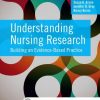
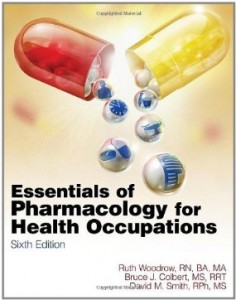
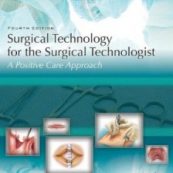
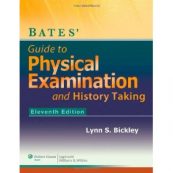
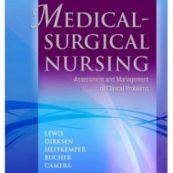
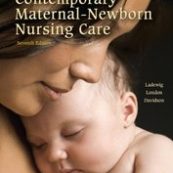
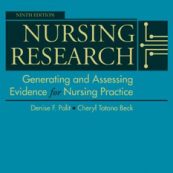
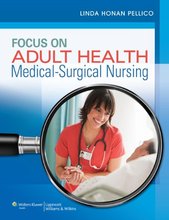
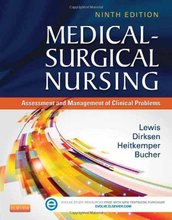
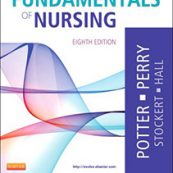
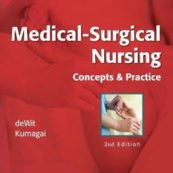
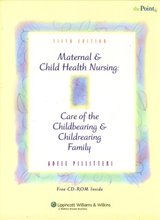
Reviews
There are no reviews yet.